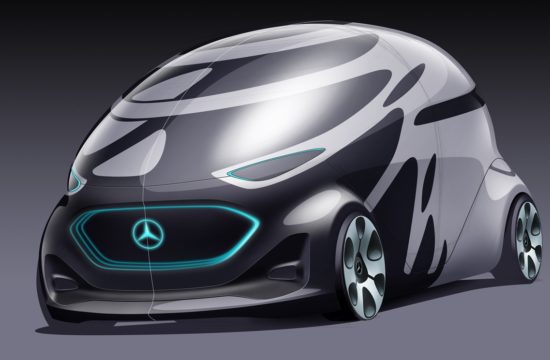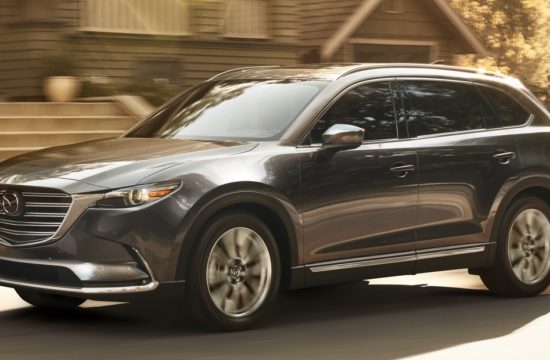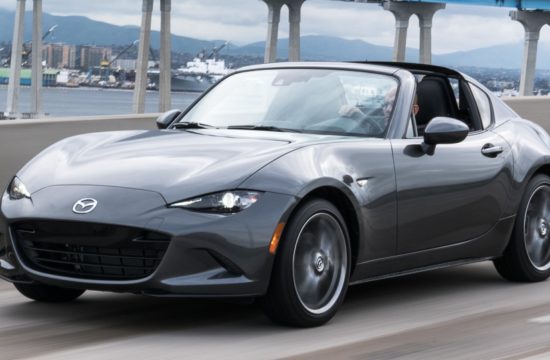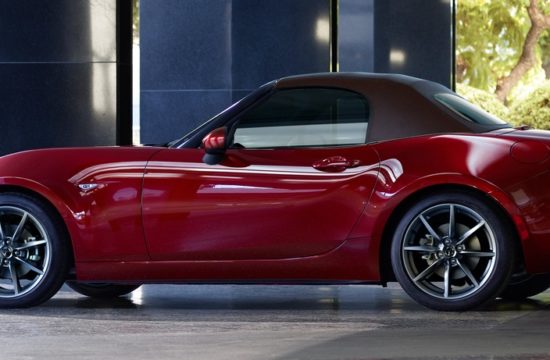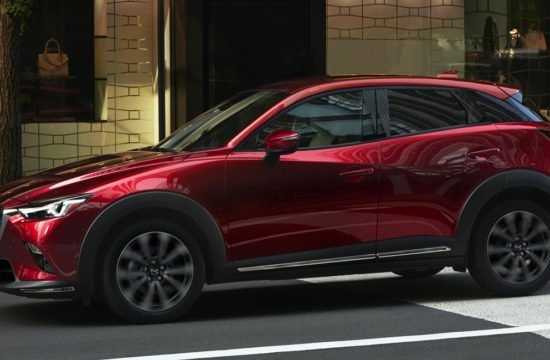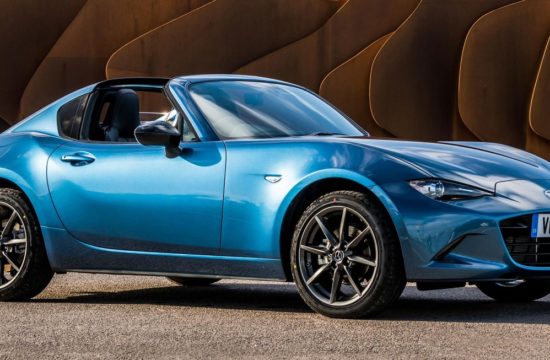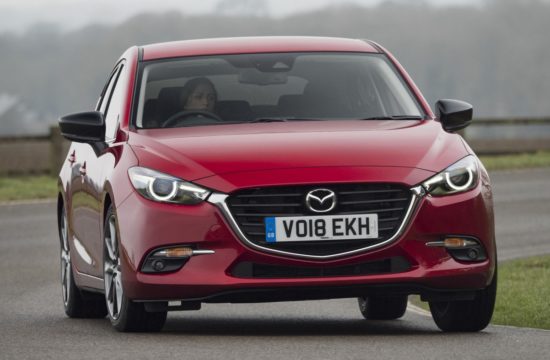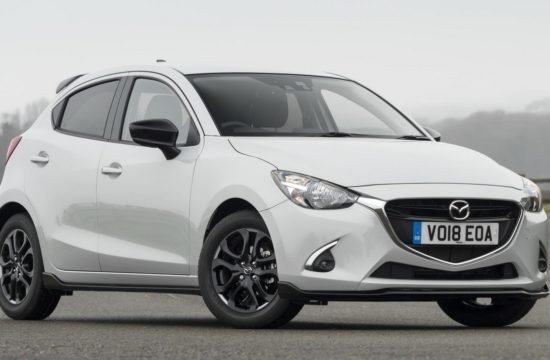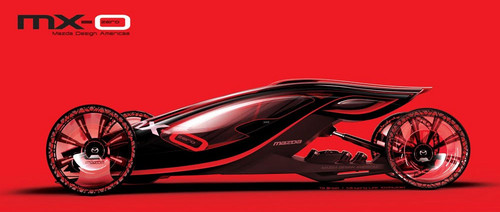
One of the most intersting projects of this year’s Los Angeles Design Challenge was this Mazda MX-0 Concept, which kinda got overshadowed by the big ones like Cadillac Aera, Mercedes Biome and so on. This year contenders had to design a futuristic 4-seater car with a weight limit of 1000 lbs (454 kilograms). The zero in the car’s name refers to its extreme lightness.
This is actually what the Mazda MX-5 of future would look like! Not five or even ten years by now, but eventually. The current MX-5 is well-known for its lightness, which makes a very sweet and fun car to drive. It has always been praised for things that it doesn’t have, not things that it has. That makes it so simple and therefore brilliant.
The MX-0 takes that idea to the next level:
Mazda’s long-time commitment to low weight is driven by the belief that effortless cornering and acceleration should be at the heart of every Mazda vehicle. The MX-5, Mazda’s lightweight icon, tipped the scales at a little over 1,000 kilograms in its first generation and was seen as the logical starting point for the MX-0.
With the MX-5 as a benchmark and seeking to create a concept on paper aimed at the global market in 2020, the design team at Mazda North America carried out a systematic process of reduction and consolidation. This resulted in each component in the MX-0 being redesigned to carry out the functions of several MX-5 components, effectively replacing a multitude of MX-5 parts with fewer, simplified ones. Innovative light weight materials have been used extensively to obsessively lower weight.
Major weight savings have been made by using unique methods and materials in key areas that constitute the greatest mass in today’s cars. A bonded two-piece monocoque structure, similar to a Formula 1 car, is used for the safety cell, subframes, body panels and interior surfaces – essentially one simplified structure. Manufacture of the structure could be automated using composite sandwich technology.
The second major area of weight in any car is the drive-train. With electric propulsion showing great promise for future weight reduction the MX-5’s ultra-light mass would be pushed by high-torque electric motors, the high power to weight ratio bringing the MX-0 to life. By decreasing the mass of the structure and components of a car, smaller motors and less energy are required to propel the vehicle. As a result, the weight of the drive-train in the MX-0 is a scant 180 lbs compared to the MX-5’s 630 lbs system.
Heavy components such as glass and suspension elements have been replaced by lighter, stronger ones. For example, sub-components such as coil-over springs and wishbones have been replaced by spring arms, made in a similar fashion to ultra-light snowboards: springy aluminum honeycomb core with a flexible glass-fibre skin. Minimal interior padding is used only where needed, exposing the purposeful monocoque structure.
Safety has been addressed by creating an exterior airbag system that deploys an open-cell crumple zone when it senses an impending crash. Perhaps most importantly, all of the materials in the MX-0 could be mass produced at relatively low cost if demand facilitated new tooling and preparation for high volumes.

